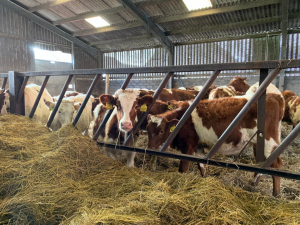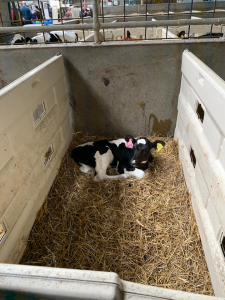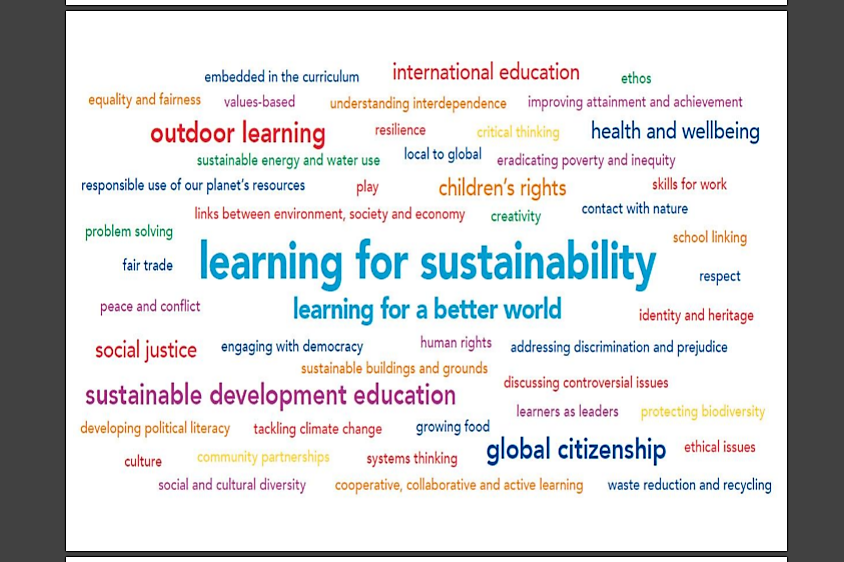This content is password protected. To view it please enter your password below:
Personal Development Plans of BA(Hons) students of education
There is no excerpt because this is a protected post.
This content is password protected. To view it please enter your password below:
There is no excerpt because this is a protected post.
This content is password protected. To view it please enter your password below:
Over the last two weeks we have been looking at interdependence. Interdependence in its simplest form is the way in which two or more people or things depend on each other. Interdependence is split into three areas; economic, social and environmental. Economic interdependence is related to the global stock market and trading, and how we, …
Over the last two weeks we have been looking at interdependence. Interdependence in its simplest form is the way in which two or more people or things depend on each other. Interdependence is split into three areas; economic, social and environmental. Economic interdependence is related to the global stock market and trading, and how we, as a country, are impacted by the value of other currencies, products and jobs in other countries. Social interdependence, because of technology and social media, is increasing. With most of the major media outlets being in the USA or Europe, American and European cultures and values are being spread throughout the world and impact on other cultures. It also means that the wants of those around the world are becoming increasingly similar and are allowing the economy to grow and feed on itself (Higgins, 2013). Environmental interdependence is something increasingly in the front of people’s minds with climate change invoking protests and political action. The biggest thing, in my opinion, that we need to be aware of is that pollution is not confined to one country or one area it is a worldwide issue. We also have to be aware that habitats and animals that are endangered in one place have an effect on the world as a whole. We can see the impact of all three of these areas if we look at them in terms of the farms we visited and the sustainable fishing infographic we created.
We visited two dairy farms; an organic farm and an intensive farm. Economically the intensive farm had a bigger impact as they sold to supermarkets, however, the organic farm may also have an impact as they sell their milk for a greater price but sell to a smaller consumer base. This also links to the social aspect of interdependence as more people are looking to eat organic food and drinks, and are against intensive farming. This is something that couple be seen within my peer group when we were at the farm as many people comment that they did not like how the cows and calves were being kept and were shocked when told that the cows were milked up to five times a day. The other thing impacting farming in general, from the social side, is the approximate 542,000 vegan that live in Great Britain (The Vegan Society, 2016 cited in BBC, 2018). This is decreasing the sales of milk and other dairy products which has an impact economically as well as socially. Dairy farming does have a huge environmental impact. According to WWF (2019) “Dairy cows and their manure produce greenhouse gas emissions which contribute to climate change. Poor handling of manure and fertilizers can degrade local water resources.” Unsustainable farming, including the production of feed, can also impact the environment through the loss of habitats, such as prairies, wetlands and forests.
The organic farm:



The intensive farm:




Sustainable fishing also impacts these three areas of interdependence. As a group we researched these three areas and made an infographic.
When we went to the farms I was rather apprehensive as I did not know what to expect and what condition the cows would be kept in. I loved the way the organic farm was run and how they kept the cows and treated them. However, I, along with a number of my peers, had a couple issues with how the intensive farm was run. We found that the cows were hardly ever outside a difficult concept to grasp and that they were milked up to five times a day compared to the organic farms one. This experience though made me more aware of the importance of educating children about where there food comes from. Children need to be able to make informed decisions about what food they want to eat, where that foods comes from and how it is made.
When reviewing my visits to the farm I developed my critical thinking skills and worked on becoming more ethically-minded as I had to really but into perspective of how I want the farms to be run and how that impacts my choices and decisions, and how it impacts the choices and decisions of others. For example, I would love to be able to support organic farming but, as a full time student with a limited income, I can not afford to buy exclusively organic products. I also came to the opinion from these visits, from research and other experiences in the past, that if someone is becoming vegan or vegetarian to protect animals from cruelty, they should consider trying to support the farms that do rear animals the way they like instead of cutting off everything but I’m also aware that, for the same reasons as I have, that this is not possible for everyone. Through this I also believe I worked on “critically examining [my] personal and professional attitudes and beliefs and challenging assumptions and professional practice” which is one of the professional values under the GTCS Standards for Registration.
Resources
https://www.rhet.org.uk/teachers/
https://www.bbc.co.uk/news/topics/cjyykdwmw58t/uk-climate-change-protests
http://www.gtcs.org.uk/web/FILES/the-standards/standards-for-registration-1212.pdf
https://fishandkids.msc.org/en/teachers/teachers-pack-1
References
Higgins, K (2013) Economic Growth and Sustainability – are they mutually exclusive? [Online] Available: https://www.elsevier.com/connect/economic-growth-and-sustainability-are-they-mutually-exclusive [Accessed: 20 October 2019]
Jones, L (2018) Veganism: Why is it on the up? [ Online] Accessed: https://www.bbc.co.uk/news/amp/business-4448805/ [Accessed: 21 October 2019]
WWF (2019) Sustainable Agriculture: Dairy [Online] Accessed: https://www.worldwildlife.org/industries/dairy [Accessed: 21 October 2019]
There is no excerpt because this is a protected post.
This content is password protected. To view it please enter your password below:
Introduction to Sustainable Development The introduction input to sustainable development was refreshing in the sense that it didn’t tackle aims that were directly for children or how it could improve a classroom. This module touched on the environment and learning for sustainability, and although it doesn’t link to how it can benefit a child, it … Continue reading week 1-2 →
Introduction to Sustainable Development
The introduction input to sustainable development was refreshing in the sense that it didn’t tackle aims that were directly for children or how it could improve a classroom. This module touched on the environment and learning for sustainability, and although it doesn’t link to how it can benefit a child, it also extends wider to the benefits to the community and global community in terms of providing health benefits and better use of green space. In regard to today’s current events in which the Amazon Rainforest has made many appearances on the news and climate change has taken the attention of many leaders. This module allows us as learners to understand how to care for the environment on a minuscule scale that can have powerful impact if done as a community (recycling). In aspect of this module that I hadn’t quite expected was how it can be socially rewarding, I always took being Eco friendly to always having environmental impacts, but never experimented on how it can bring together a community. As informative as this input was as a learner, links were still made to how it relates to teaching and how children must learn about the earth and understand how to care for it, because Climate change not only affects us but it will affect them too.
Diversity
A topic that is not only vital to acknowledge in a school environment but in all aspects of ones life. Diversity is the key to accepting change and embracing differences. In today’s input diversity was challenged in a classroom environment and how it could raise issues.
In order to assess the task in a different manner, Andrew suggested that as a class we acted out situations that could arise due to diversity within a classroom, and the stereotypes that surround minority groups. Hesitant and first and unsure of the medium, we discussed several stereotypes. Personally being of a ethical minority some of the stereotypes were target at my faith, and although feeling quite targeted I had to remind myself that this activity wasn’t about me. It was, as a class to understand that these enactments actually happen in many children’s life’s, and I can verify this as I myself have experienced several encounters that were based on stereotypes. I understood stereotypes were generally based on ignorance and lack of knowledge on ones faith or ethnicity, so looking at this from a teachers perspective, the clear solution would be to to educate. Educate children from as early as primary one that not everyone is the same, we may come from different places, we may dress differently and eat different things, but that does not and should not mean that we must be treated different. Every child has the right to learn. No child is better or lesser due to their background and financial status. As teachers, in order to avoid discrimination in the classroom we must teach our children the beauty of diversity.
There is no excerpt because this is a protected post.
This content is password protected. To view it please enter your password below:
There is no excerpt because this is a protected post.
This content is password protected. To view it please enter your password below:
Before starting this module, I was anxious of what it would it would entail; in school science was a very hard topic for myself. I was never confident or certain of this subject so it was interesting to see if this module would change my opinion. In the lecture the main discussion point was “what … Continue reading Diversity →
Before starting this module, I was anxious of what it would it would entail; in school science was a very hard topic for myself. I was never confident or certain of this subject so it was interesting to see if this module would change my opinion. In the lecture the main discussion point was “what does sustainability mean in a single word?” many people commented eco, recycling, preventing, save and future. Sustainability is about empowerment and getting everyone to do their part for a better future.
During the 1st science input, this was about biodiversity it carried out serval science experiments. One of these were using leave rubbing and bark markings to determine different types of plantations. This was very enjoyable because it was simple and could be used with very young children as easy to see the biodiversity in different species of plants and trees. Another experiment was snails on different textures. Children would really benefit from a science experiment like this as it was unique and really fascinating. Flower dissecting was also used this is to determine a flowers anatomy. This would be good for children as it is interdisciplinary learning it builds upon fine motor skills as well as biodiversity.
WOSDEC- is a group of external educators who specialise in global citizenship and learning for sustainability gave a workshop about creating sustainability. WOSDEC explained the idea of that learning for sustainability is many factors it not about just ‘recycling’. It is more than this (see picture below).

(WOSDEC, 2019)
Leaning for sustainability is about children’s rights, outdoor learning and so much more. This changed my mindset completely from this mind map; before seeing this, I didn’t really know what sustainability was but now I have a further understanding of what this entails. From this the speakers moved onto the 17 global goals. They explained that these goals were not yet attainable, but it was a vision to strive for in the future. An example of one of the goals is zero hunger (The Global Goals, 2019).
For information on global goals for children ( https://www.youtube.com/watch?v=cBxN9E5f7pc )
(YouTube, 2019)
One of the graduate attributes I think I have developed from these workshops is being culturally aware. These workshops made me realise what sustainability really was and how as an individual I can make a difference. Another attribute I discovered with biodiversity was creativity. From the workshops I discovered innovative ways of showing diversity. This made me feel so much more at ease about teaching science and I could use my creative flow to demonstrate different ways of understanding a topic.
Culture diversity was the second input received at university. This was a very thought provoking lecture. This lecture dived into deep controversial issues such as values, gender, race, sexuality and religion. The class identified what this means in 2019 and spoke of definitions. The lecturer then posed controversial questions to each of the groups, one of the questions was-
“Should all public buildings include gender neutral bathrooms?”
It was very interesting to hear ranges of perspectives from different ranges of people to all of the questions in the class. The importance was as a teacher we should not enforce our opinions towards children. When entering a classroom, it should remain unbiased by a teacher as well as being open minded for differences. This allows children to make more informed decisions. Stereotyping was the next issue in the lecture. It identified particular groups previously who have been prejudiced for stereotypes such as Jewish people, gay people and poverty stricken individuals.
For videos on diversity and why it is needed in a society see this video below.

https://www.bbc.co.uk/bitesize/topics/znbrpg8/articles/zhvtcqt
It was further identified that not all people mean to stereotype. Prejudice and stereotyping can come from a place of ignorance. As teachers it is our duty make children more socially aware and culturally aware about these types of issues. Educating children about being prejudice is so important as this can transition, and children can help parents and elders be more informed and politically correct about these controversial issues.
A graduate attribute I have developed from this input is firstly expanding on my culture awareness, but also being having emotional intelligence with this topic. Controversial issues can be very sensitive for some children therefore this topic should be covered in a careful manner. This will deepen the culture awareness in the classroom setting as teachers are seen as role models and children will try and replicate. This also enhances the graduate attribute of gaining socially responsibility.
References
BBC Bitesize. (2019). Living in a diverse society. [online] Available at: https://www.bbc.co.uk/bitesize/topics/znbrpg8/articles/zhvtcqt [Accessed 19 Sep. 2019].
Robertson, J. (2019). WOSDEC Global Learning Centre – Working to promote social justice through education. [online] Wosdec.org.uk. Available at: http://www.wosdec.org.uk/ [Accessed 19 Sep. 2019].
The Global Goals. (2019). The Global Goals. [online] Available at: https://www.globalgoals.org/ [Accessed 19 Sep. 2019].
YouTube. (2019). The World’s Largest Lesson. [online] Available at: https://www.youtube.com/watch?v=cBxN9E5f7pc [Accessed 19 Sep. 2019].
There is no excerpt because this is a protected post.
This content is password protected. To view it please enter your password below: